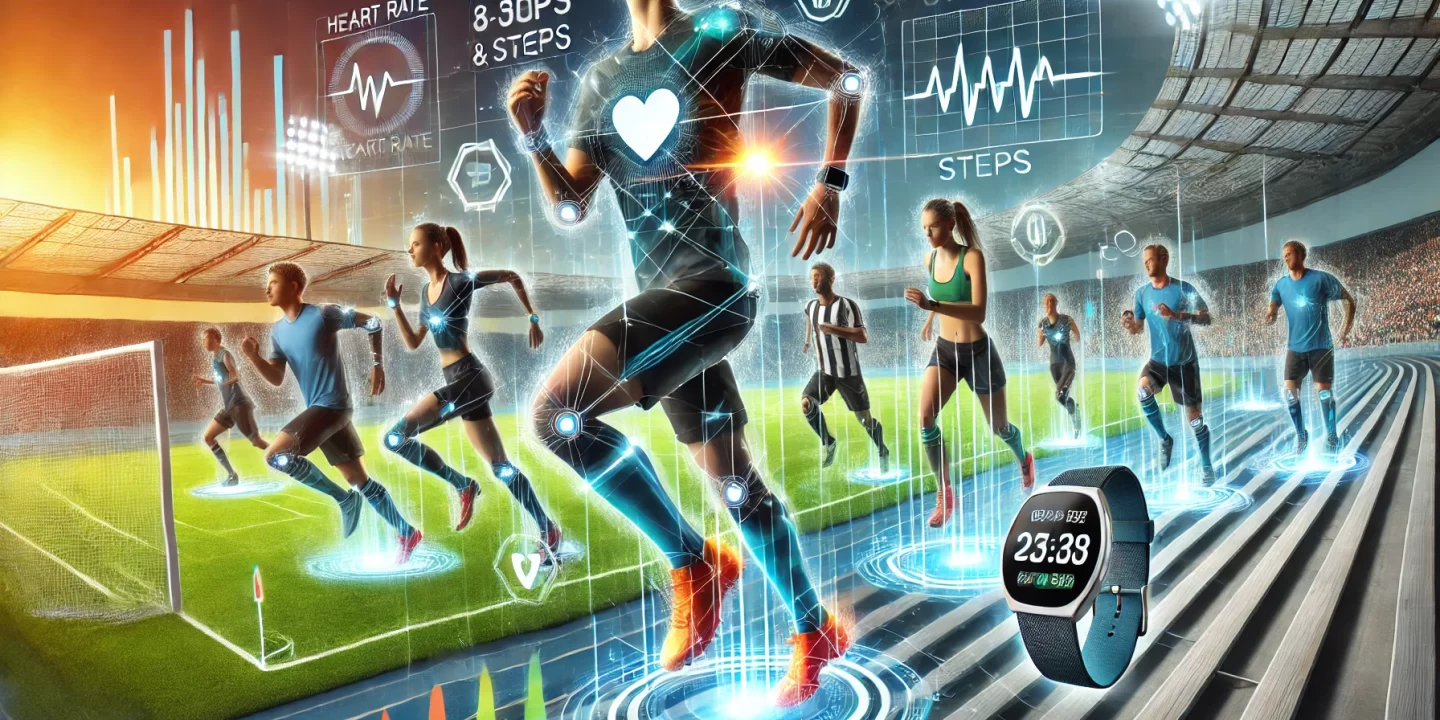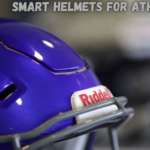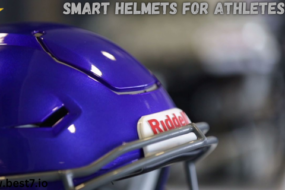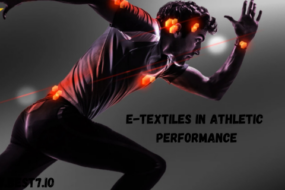
Wearable technology in sports will continue to redefine how athletes train, compete, and care for their health. As sports technology continues to revolutionize the industry, development in sports wearables will allow for enhanced performance tracking and health monitoring.
These devices will be at the forefront for maximizing athlete performance and outcomes, as well as reducing risks of injuries. As wearable technology continues to ingrain itself in sports, future developments will extend the limits on real-time performance monitoring and athlete-centric data analytics.
Role of Wearable Sensors in Sports and Tracking Performance Performance of Athletes
The role of wearable sensors in sports will allow for unprecedented innovations in tracking performance. These sensors will collect massive amounts of data for analysis in order to fine-tune training and competition strategies, as well as sports wearables’ reliance on data analytics to allow for more accurate decisions.
In the future, sports wearables will develop beyond just pedometers or basic heart rate monitors, extending to more sophisticated information, such as muscle activity, sweat composition, and even neural responses. This will allow athletes and their coaches to modify their tactics based on real-time performance. For instance, injury prevention wearables will monitor a player’s movement and identify patterns that are potentially harmful.
A case study on this was conducted with a professional football team, where the team’s injury rate was reduced by 20% over the course of two seasons, tracking players’s workloads and adapting training as needed. By 2026, it is estimated that sports performance technology usage will result in a further 30% reduction in injury rate as more athletes wear monitoring devices to track recovery and avoid overtraining.
Advanced Sports Wearables for Health Monitoring and Injury Prevention
Wearables for health monitoring will become increasingly important in the future of sports. These devices make it possible to track biometric data in real-time, providing athletes with the means to monitor such vital signs as heart rate, oxygen levels, and hydration status.
The advent of these wearable health trackers will make them necessary in high-performance sports environments, as any irregularity in an athlete’s health can affect the outcome of the sports event.
1. Biometric wearables for athletes: Wearable fitness devices can monitor heart rate variability, sleep quality, and respiratory rates, tracking these vital signs to optimize recovery routines.
2. Wearable sensors in sports: They will also track muscle fatigue and strain instantaneously, giving these trackers the capacity to provide a warning before specific injuries happen. Advanced algorithms will then be used to suggest whether an athlete should rest or alter their workout.
3. Injury prevention wearables: Devices will monitor joint angles and motion patterns to curb such common sports injuries as sprains and tendonitis. Wearable technology for training will also be able to sense the warning signs of stress fractures or ligament tears.
4. Hydration and nutrition monitoring: Smart sports gear will also have the sensors to track the level of hydration and nutrients in a sportsman’s body, indicating optimal consumption to keep their performance at peak levels.
5. Real-time health warnings: Wearable health trackers will sound the alarm if any vital sign of a sportsman suggests going beyond safe parameters, allowing for immediate health assistance.
6. Data analytics in the sport wearables: Data at the time of collection will be analyzed to spot the patterns made during a training session that correspond with the optimal performance or the risk of injury.
7. Long-term health benefits: By 2030, wearable technology will provide athletes with a 10% longer career, as it will stop career-ending injuries and long-term health conditions.
In terms of sports technology innovations, the main focus will remain on injury prevention and health optimization, implying that athletes will have control over every aspect of their functionalities. The future trends will involve wearable health trackers in everyday gear for training. As a result, athletes will not be required to endure extra procedures to be able to train.
Demands for Wearable Tech Trends to Support Training and Performance
Wearable technology will become a part and parcel of every form of training and its development. Thus, athletes will wear these devices and have every part of their performance checked:
Every element of training will be traced with the help of wearable technology.
High-quality sports gear will give feedback immediately, meaning that the user will know when they need to change the intensity of their training.
Performance tracking is another important function of wearable technology. High-quality sportswear will check biomechanics and show how energy wasting affects performance. As a result, the performance will increase, and athletes will achieve their results quicker.
According to the study that had been conducted in 2022, 15% sprint times improvement were observed with elite track athletes who wore sports technology. Thus, after assessing sports tech components, real-time feedback regarding the way runners were currently running was offered to the group of elite runners. It is anticipated that by 2028, 25% performance improvement will be observed with wearable tech devices for all types of performance.
The future will include the use of sensors, meaning that coaches will know which muscles and tissues need more exercise. Thus, more personalized training will be developed, especially in the field of team sports.
The development of wearable technology in sports is a question of a more sophisticated sensor, more analytics, and more intelligence. In ten years, by 2030, the wearables will become integrated into the daily routine of an athlete more than ever, becoming smaller and tougher while capturing greater sets of data.
1. Predictive Analytics Through AI: By 2030, wearables will incorporate AI analytics that will predict how exactly any performance will develop based on the captured personal historical data. Moreover, AI integration will predict injuries accordingly.
2. Miniaturization Trend and Beyond: The advances in technology will make wearables smaller and will allow athletes to wear them in any situation they will find themselves in during their training.
3. Embedding Sensors Into Sports Equipment: Smart clothing and sportswear will incorporate sensors that will advance athletes’ training without additional devices’ requirements.
4. Storing Data in the Cloud: The data collected for any athlete on his or her wearables will be stored in the cloud, making all performance history and health data available for the athlete, his or her medical staff, and coaching staff. The athletes will not need to remember the previous values when period analysis they are in another country practicing or competing.
5. High Customization: The sportswear will be highly customizable, and the athlete will be able to choose wearables in the store personally for their performance goals or health data they want to monitor.
6. More Durable and Compliable: The advances in the materials used for the production of wearables will make them tougher and suitable for any environment. ählbar.
7. Higher Adoption Rate Among Athletes: By 2035, over 90% of professional athletes will practice with wearables and track their performance. Nevertheless, the rate of amateur athlete wearable adoption will reach the point of 70%.
The future of wearable technology in sports will be revolutionary, as every part of athletic performance and health will become optimized with the new insights and technology. The sensors and devices for athletes will be further developed to provide real-time feedback and health monitoring. As a result, the duration of the careers of players will increase, and the limits in performance will be further pushed.












